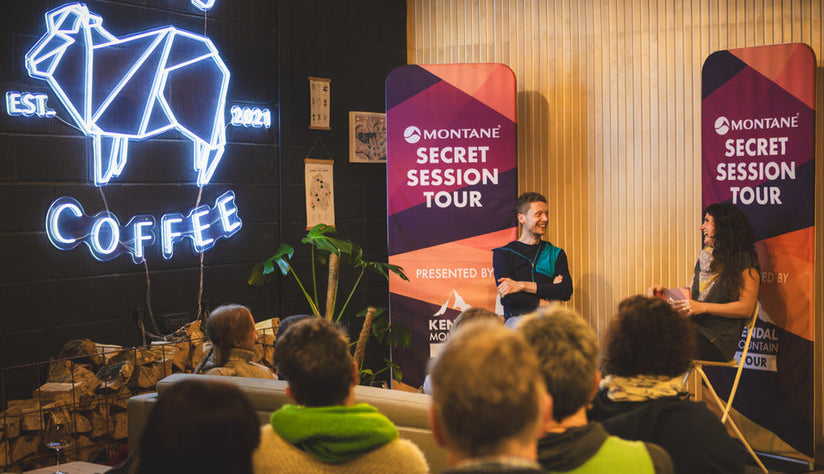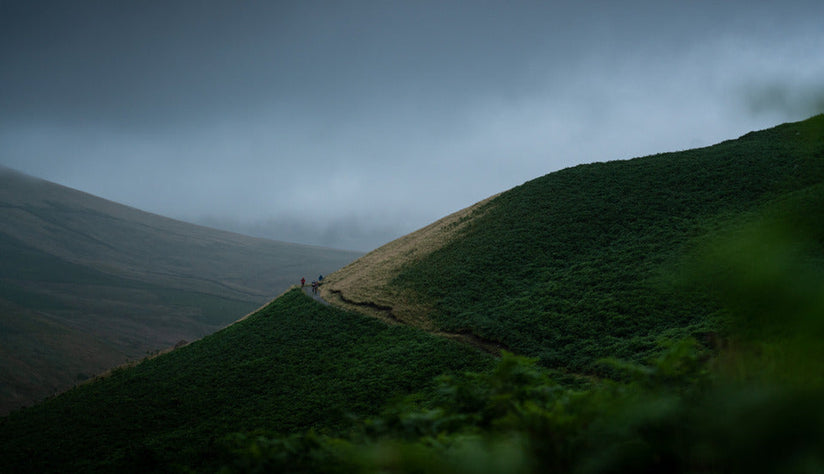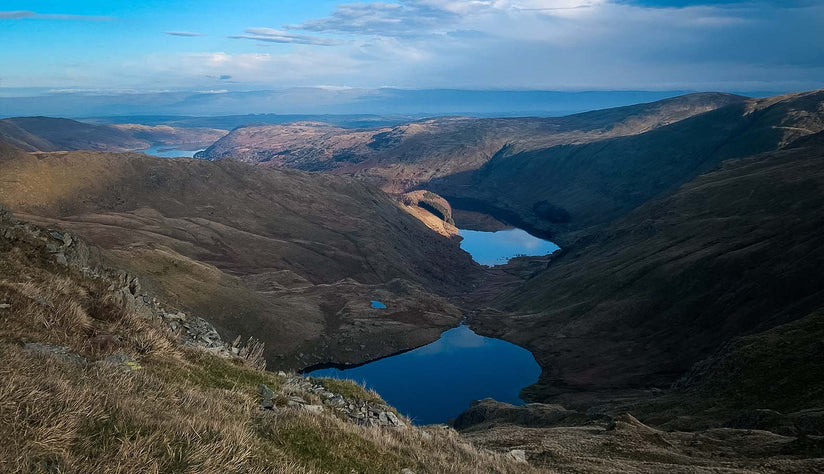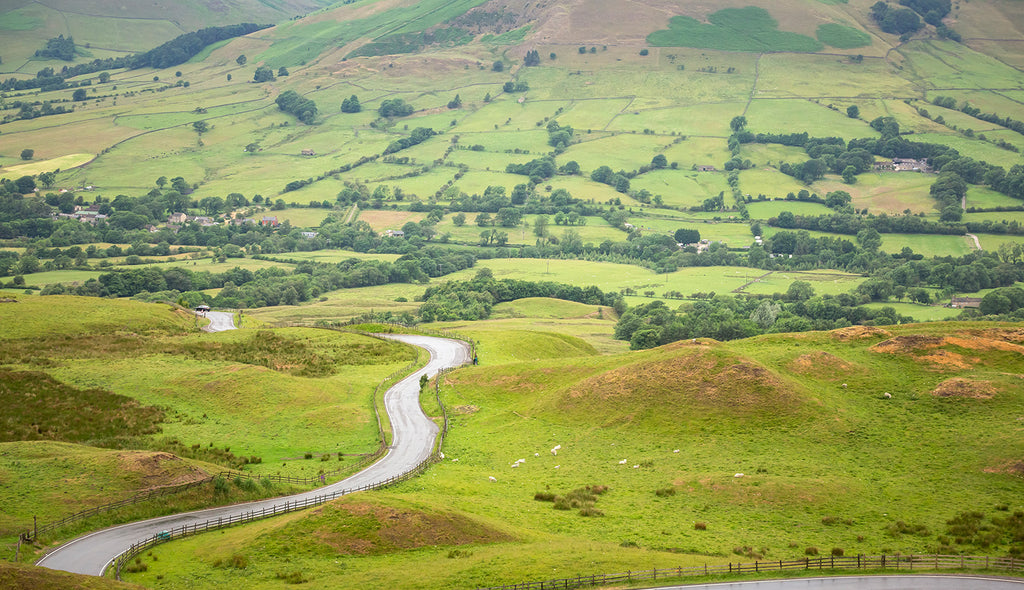Victoria Thompson is an outdoor enthusiast based in the Lake District. This #TeamMontane athlete is regularly seen running longer-distance routes and races, such as the Lakeland 50 and Dragons Back Race. Back in February 2024, Victoria decided to take on the Outside Hope Valley Round (OHVR) having read about it online. She went on to smash the women’s FKT!
Keep reading to find out about Victoria’s experience and how you can push your performance on the Hope Valley Round trail…
Setting a new FKT on the Hope Valley Round
The route starts in the shop called Outside in Hathersage and is 32km with 1360m elevation. Some of my favourite races are similar in distance, so I thought it would be a great adventure! Another of my motivations was that I like running in new areas - I enjoy the feeling of being in the unknown! The Peak District fits that category as I’ve not explored it much by foot (although I have done some trad climbing there).
I wasn’t necessarily going for the FKT, I wasn’t sure what the women’s record even was before the morning of the run (I don’t think there is an online roll of honour for the OHVR yet as it’s fairly new). When I asked in the shop and they said it was 3h06m, I knew I’d have to try hard to beat it. I wasn’t sure I could! For me, aiming for a fast time is appealing as it focuses my mind and body into effort mode where I can push a bit harder than on normal training runs.
In the morning, I’d filled my Montane running vest pack with a lot of comfort items so it wasn’t particularly light. To maximise my chances of beating the FKT, I deliberately left some items behind e.g. a fresh orange, a spare layer, and a bag of salted cashews. I didn’t need this gear weighing me down! I did keep hold of all the essentials that would keep me warm, dry, and energised in an emergency.
I’d tactically decided to run the route in the anticlockwise direction to benefit from a (pretty much continuous) gentle downhill for the second half. I know I can run this terrain fairly fast so it made sense. It did mean that I had some steep climbs to power walk up in the first half. Given I’m not a fan of descending steeply, this was my preference!

As soon as I set off, all my hopes of beating the FKT diminished. The initial part of the route (which runs parallel to a river before heading up Win Hill) was super muddy. I was sliding all over the place and couldn’t get my feet to grip the ground! Nevertheless, I kept pushing as hard as I could to try and maintain some speed. I didn’t look at my watch at all on this section, so it was only at the halfway point, after lots of people dodging on the busy path between Lose Hill and Mam Tor, that I realised I might be able to beat the FKT. I tried to let my legs take over and stride out on the runnable downhill of the second half. No doubt my arms were waving all over the place to keep me balanced!
Around 5 km from Hathersage, my mind was convincing me that my legs had nothing left and that I should just stop moving. I fed myself a couple of gels in quick succession which gave me a good energy boost. The final run back into town was quite challenging, I was feeling a bit sick and I knew that timings were going to be close. I was very grateful to see the shop again and to know that I’d beaten the FKT by around 4mins. What a great day! What a great route!
Back inside the shop, after I’d had a bit of a rest and refueled, I bumped into others who’d also run the OHVR that day. It was lovely to say hi and share our experiences. It made me reflect on the allure of running a round versus competing in a race. I think there is a completely different set of appeals for tackling a round. For example; you can pick the day you run (and so the weather/underfoot conditions), you could choose to be supported and meet someone en route to give you food and fluids, you could choose not to tell anyone or to not have your result posted publicly, it’s free (although you might need to buy a map) and there’s no mass sprint start! That being said, I do enjoy a bit of race-day pressure to make me move fast!

Tip 1 - Nutrition
Food and fluid are essential items for any route but they can add a lot of weight to a race vest and contribute to a relatively slower pace. From experience, I know that having a gel every 30 minutes is enough to sustain me over 3-hour efforts. For the Outside Hope Valley Round, I took 6 gels, a banana, and a small flapjack bar. I ate all the gels and the rest were emergency snacks in case things went pear-shaped.
I also took 2x500mL montane soft flasks, both full of water, plus an electrolyte tablet. This added 1kg to my pack weight, which I thought necessary given there was nowhere to fill up en route. In hindsight, I would have only taken one flask as I ended up emptying 500ml at the halfway point when I realised I wouldn’t need it.
To summarise, I think it’s important to figure out what food/fluid combination and amount works for you and appreciate that this might change over time. I used to love eating Soreen, but I can’t stomach ‘real food’ (except bananas) on hard efforts anymore.
Tip 2 - Navigation/Elevation mapping
I like to use a map and compass rather than gpx for navigating a route. I find this gives me a better understanding of the elevation profile and helps me discern features (e.g. where I might cross a drinkable stream) more easily. I also like quickly glancing at a map and seeing how far I’ve gone. That gives me something to be proud of which can boost my mood if I’m feeling fatigued.

For the OHVR, I went anti-clockwise as the elevation features in that direction (initial steep uphills and then, from halfway, a relatively steady downhill) suit my running capability. If you want to maximise speed, I’d advise looking at the elevation profile and deciding which way is optimal for your skill set. Sadly, that might not always be the most scenic way!
Tip 3 - Tracking timings
Whatever time you are aiming for, it can be useful to jot down when you’re expecting to be at certain points on the route. This helps you know whether you’re on track or if you need to speed up (or slow down). This is quite different from being in a race situation where you can be more aware of where you are in the field and how fast you are travelling.
In all honesty, I didn’t take that approach here. Instead, I opted for just running as hard as I could throughout and seeing what time it resulted in! That just about worked but it’s probably wiser to have a note to refer to (mental or physical).
Victoria took on the Outside Hope Valley Round Challenge. Want to give it a go for yourself? Find out more on our dedicated page.















